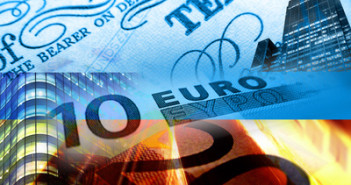EUR/USD dropped after the Federal Reserve announcement yesterday (August 1st). The Fed held back from introducing any monetary easing measures, disappointing the markets. The pair then recovered early in the European session. The ECB will be holding an important policy meeting on Thursday, and  the markets will be looking for the powerful central bank to take some concrete action. As well, the ECB will announce its key interest rate, which is expected to remain at 0.75%. Other key releases include the the ECB press conference after the interest rate announcement, the Spanish 10-year bond auction and US Unemployment Claims.
Here’s an update about technical lines, fundamental indicators and sentiment regarding EUR/USD.
EUR/USD Technical
- Asian session: Euro/dollar lost ground, falling to 1.2219, before consolidating at 1.2239. The pair has recovered in the European session, trading at 1.2281.
- Current range: 1.2288 to 1.2330.
Further levels in both directions:Â 
- Below: 1.22, 1.2144, 1.2043, 1.20, 1.1876 and 1.17.
- Above: 1.2288, 1.2330, 1.2360, 1.24, 1.2440, 1.2520 and 1.2623.
- 1.2288 is currently providing weak resistance, and looks to be tested further.
- 1.22 is the next line of support.
Euro/Dollar unsteady following Fed announcment – click on the graph to enlarge.
EUR/USD Fundamentals
- 7:00 Spanish Unemployment Change. Actual -27.8K.
- 9;00 Euro-zone PPI. Exp. -0.3%. Actual -0.5%.
-
Tentative: Spanish 10-y Bond Auction. Actual 6.64%.
-
11:30 US Challenger Job Cuts.
-
11:45 ECB Minimum Bid Rate. Exp. 0.75%.
-
12:30 ECB Press Conference.
-
12:30 US Unemployment Claims. Exp. 375K.Â
- 14:00 US Factory Orders. Exp. +0.4%.
- 14:30 US Natural Gas Storage. Exp. 22B.
- Tentative: US Loan Officer Survey.
EUR/USD Sentiment
- Fed stays on sidelines, again: The Federal Reserve opted to refrain from implementing fresh easing measures, despite troubling data from the US economy. The Fed took note that economic growth was stagnant in 2012, and reiterated that it stood ready to act if necessary. Haven’t we heard this tune from Bernanke before? It’s clear that the Fed will not implement monetary easing, such as QE, without a significant deterioration in US economic conditions. Overshadowed was the Fed decision to maintain interest rates at 0%-0.25%.
- Markets want action at ECB meeting: The head of the ECB and European leaders have pledged to do everything to save the euro, but can they deliver? The markets remain wary and cautious ahead of Thursday’s ECB Policy Meeting. High on the agenda is the issue of Spanish and Italian borrowing costs, which have been reaching dangerous levels. The central bank will be under pressure to announce concrete steps to tackle the crippling debt crisis. ECB head Mario Draghi has a range of steps available to him, including a rate cut, QE, ECB bond purchases, and others. If he takes his cue from the Fed and does nothing, look for the euro to drop in response.
-
ECB, Germany at loggerheads over sovereign bonds proposal: ECB head Draghi has hinted that the ECB would buy sovereign bonds from Italy and Spain. German finance minister Wolfgang Schäuble has rejected the idea, and also the conservative central bank in Germany continues rejecting it. The head of the Bundesbank Jens Weidmann and Draghi will meet before Thursday’s ECB meeting. There are reports that Germany and the ECB have offered to help Spain with lowering bond yields if the nation launches new budget cuts.
Traders should be careful, as there is good reason to be cautious, if not skeptical about what steps the ECB is prepared to take in to tackle the crippling debt crisis affecting the Euro-zone. - German economy slowing down: If the euro still is a new Deutschmark, there are enough reasons to be worried. German Services and Manufacturing PMIs both came in below the market forecast, indicating weakness in those sectors of the economy. This was followed by an awful Business Climate release, as the indicator fell below the market estimate and hit a two-year low in the process. Retail Sales was also well below the market estimate. The markets are clearly getting nervous, as a Germany in decline could spell disaster for the struggling Euro-zone and send the euro tumbling. Just to add oil to the fire, Moody’s reduced the outlook on Germany, the Netherlands and Luxembourg from stable to negative.
- Spanish regions want in on the bailout: The euro-zone’s fourth largest economy is trying to focus the crisis on the banks, but also its regions are in deep trouble. No less than 6 regions may ask to tap into the national bailout fund. National sentiment is strongly felt in Catalonia. There is growing speculation about a full sovereign bailout, worth 300 billion euros. This is in addition to the 100 billion euros earmarked for the banks. Meanwhile, the yield on Spanish 10-year bonds remained under 7%, as the average yield at Thursday’s auction was 6.64%. This is a welcome sign that investors are more confident about the safety of Spanish bonds.
- Grexit fears rise as Greece likely to miss bailout obligations: Fears of a Greek exit from the Euro-zone have again surfaced. Greece is already running into difficulty meeting its bailout obligations, such as debt-to GDP targets, and this could jeopardize the bailout funds. Germany continues to take a tough line with Greece, as German Vice Chancellor Philipp Roesler warned that Greece must adhere to austerity measures in order to receive bailout funds. Meanwhile, the troika, comprised of the European Commission, ECB and the IMF, are holding talks with the Greek government in an attempt to resolve the latest crisis. Greece announced new austerity measures, but will it be enough to convince the troika? The country has to pay over 3 billion euros to the ECB on August 20th, and it doesn’t have the money at the moment.
- High yields and crushing debt weigh on Italy: Doubts about Draghi’s seriousness can be seen in his own country. The area’s third largest economy raised money in the markets with a yield of 5.96%, higher than 5.82% seen last time. The specter of early elections in which the anti-euro sentiment will gain traction also weighs on Italy, that now has a debt-to-GDP ratio of 123%, and a contracting GDP.



